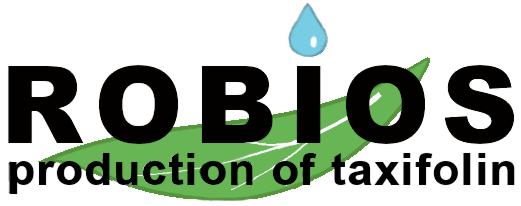About Arabinogalactan(AG)
Larch arabinogalactan, also known as Galactoarabinan, is a polysaccharide powder derived from the wood of the larch tree (Larix species) and comprised of approximately 98 percent arabinogalactan. Larch arabinogalactan is approved by the U.S. Food and Drug Administration (FDA) as a source of dietary fiber, but also has potential therapeutic benefits as an immune stimulating agent and cancer protocol adjunct. Pharmaceutical-grade larch arabinogalactan is a fine, dry, off-white powder with a slightly sweet taste and mild pine-like odor. It dissolves in water or juice and is low in viscosity; therefore easy to administer, even to children. It is composed of galactose and arabinose molecules in a 6:1 ratio, with a small amount of glucuronic acid. Arabinogalactans are long, densely branched polysaccharides of varying molecular weights (10,000-120,000).
Special Project www.contr-covid19.ru
Dietary Fiber
Larch arabinogalactan is an excellent source of dietary fiber that is able to increase short-chain fatty acid production (primarily butyrate) via its vigorous fermentation by intestinal microflora. It is well documented that butyrate is essential for proper colon health, as it is the preferred substrate for energy generation by colonic epithelial cells. Butyrate also acts as a protectant for the intestinal mucosa against disease and cancer-promoting agents. Larch arabinogalactan given to human subjects increased levels of beneficial intestinal anaerobes, particularly Bifidobacterium longum, via their fermentation specificity for arabinogalactan compared to other complex carbohydrates.
Cancer Adjunct
Larch arabinogalactan may be an effective adjunct to cancer therapies due to its ability to stimulate NK cell cytotoxicity, stimulate the immune system, and block metastasis of tumor cells to the liver. Tumor metastasis to the liver is more common than to other organ sites, probably due to tumor cell specificity for lectin-like receptor sites found in liver parenchyma. Animal studies have demonstrated arabinogalactan’s ability to inhibit or block lectin receptor Larch Arabinogalactan sites, thereby reducing tumor cell colonization of the liver and also increasing survival time of the subjects.10-12 Pretreatment with larch arabinogalactan was found to stimulate NK cell cytotoxicity via potentiation of the cytokine network, primarily via an increase in the release of gamma interferon.
Pediatric Otitis Media
Recurrent otitis media is common in pediatric populations and it appears that improving immune system function might lead to a decrease in both frequency and severity of this condition. Research has demonstrated larch and other arabinogalactans to be capable of enhancing the immune response to bacterial infection via stimulation of phagocytosis, competitive binding of bacterial fimbriae, or bacterial opsonization. This was found to be particularly true for infection by gram negative organisms such as Escherichia coli and Klebsiella species. In addition, D’Adamo reports a decrease in occurrence and severity of otitis media in pediatric patients supplemented prophylactically with larch arabinogalactan. Larch arabinogalactan’s mild taste and excellent solubility in water and juice make it a relatively easy therapeutic tool to employ in pediatric populations.
Miscellaneous Chronic Diseases
A number of chronic diseases are characterized by decreased NK cell activity, including chronic fatigue syndrome, viral hepatitis, HIV/AIDS, and autoimmune diseases such as multiple sclerosis. Stimulation of NK cell activity by larch arabinogalactan has been associated with recovery in certain cases of chronic fatigue syndrome. Viral hepatitis (hepatitis B and C) is also characterized by a decrease in NK cell cytotoxicity therefore, these patients may benefit from its stimulation by larch arabinogalactan. In the case of multiple sclerosis, a small two-year study of patients with the relapsing/remitting type concluded that disease severity was correlated with NK cell functional activity, supporting the hypothesis that NK cells play a role in the immunopathogenesis of this disease. Consequently, stimulation of NK cell cytotoxicity might be of clinical benefit to these patients. Patients with HIV/AIDS develop low CD4 cell counts and often are plagued by opportunistic infections. By virtue of its immune-stimulating properties, larch arabinogalactan has been shown to effect a slight increase in CD4 cell counts, in addition to decreasing susceptibility to opportunistic pathogens.
Side Effects and Toxicity
Larch arabinogalactan is a safe and effective immune-stimulating phytochemical. It is FDA-approved for use as a dietary fiber and in food applications. Both acute and long-term toxicity studies in rats and mice reveal no evidence of toxicity. Human consumption is usually without side effects; however, a small percentage of people (<3%) experienced bloating and flatulence, possibly due to the vigorous fermentation of the arabinogalactan by intestinal microflora.
Because of its excellent safety profile and solubility in water and juice, larch arabinogalactan is considered a safe, effective immune-stimulating agent for pediatric use.
Dosage
Larch arabinogalactan in powder form is typically dosed in teaspoons or tablespoons at a concentration of approximately 4-5 grams per tablespoon. The typical adult dosage is one to three tablespoons per day in divided doses; the pediatric dose is one to three teaspoons per day. The powder is usually mixed with water or juice but can be added to food if desired.

